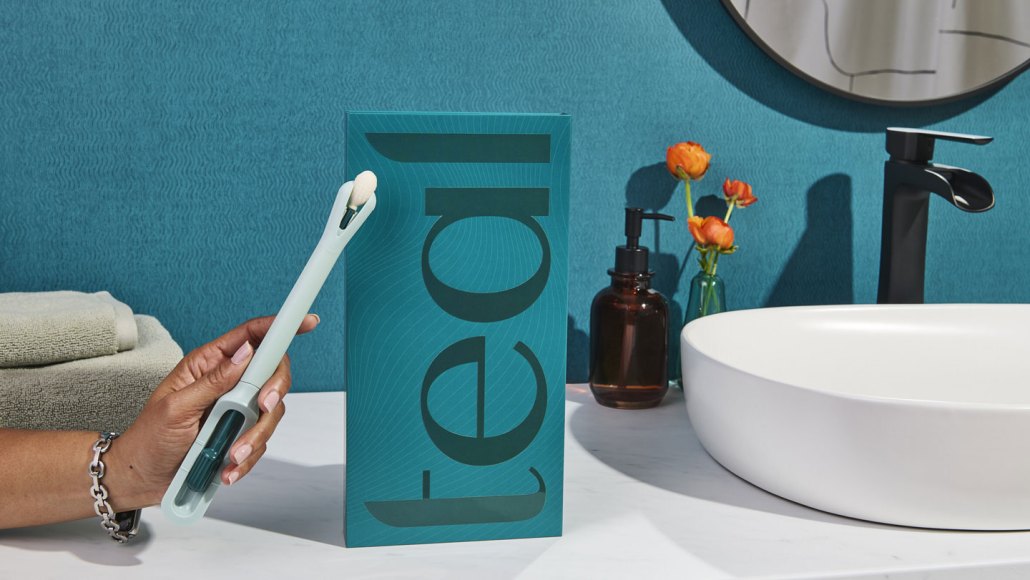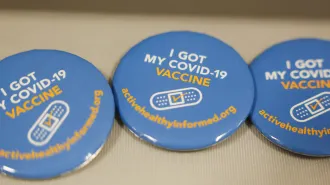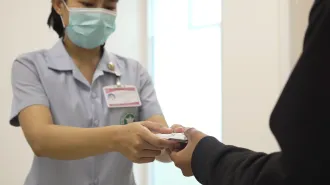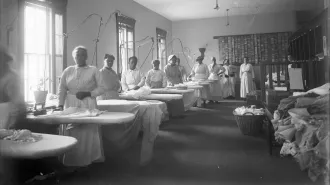An at-home cervical cancer screening device was OK‘d by the FDA
The Teal Wand is the first self-collection device of its kind for home use

The FDA has approved the Teal Wand, a new device for at-home cervical cancer screening.
Nicole Morrison/Teal Health
Screening for cervical cancer many soon be possible within the privacy of your own home.
On May 9, the U.S. Food and Drug Administration approved the Teal Wand, a tamponlike tool people can use to collect cells from their vagina. It’s the first self-collection device approved for at-home use in the United States and could broaden access to cervical cancer screening.
The concept is simple. Patients swab themselves with the wand then send it back to Teal Health, the company that makes the device, for analysis. It’s looking for traces of HPV, the virus to blame for nearly all cervical cancer cases. According to Teal Health, Wand rollout will begin in June in California and later nationwide. The company’s medical providers will prescribe the device to eligible patients, who will be able to access their results via Teal Health’s telehealth service.
“I think it’s very exciting,” says Barbara Goff, a gynecologic oncologist at Fred Hutch Cancer Center and the University of Washington School of Medicine in Seattle. “It expands cervical cancer screening to more women, which is good. And it makes [screening] more comfortable, which is also good.”
In 2025, scientists predict that the United States will see more than 13,000 new cases of cervical cancer, and more than 4,000 deaths due to the disease. Overall, the rate of new cervical cancer cases has been inching downward for decades. But those numbers mask a much more nuanced — and unfortunate — story, says Trisha Amboree, a cancer epidemiologist at the Medical University of South Carolina Hollings Cancer Center in Charleston. “We’re seeing really concerning trends, particularly in low-income groups and in rural groups.”
In rural U.S. counties, cervical cancer incidence is actually creeping up, Amboree’s team reported in JAMA Network Open in March. The work builds on research she and her colleagues published last year linking low county-level income (less than about $40,000 per year) to a recent rise in cervical cancer diagnoses in non-Hispanic white woman. The rise was small, with rates growing from 11.9 per 100,000 women in 2007 to 13.6 per 100,000 women in 2019. But Amboree’s team also saw an increase in late diagnoses, after cancer had spread from the cervix to other parts of the body. That’s when the disease, which is highly treatable when caught early, tends to have a much lower survival rate.
Early screening could prevent such cancers and also curb cases in American Indian, Alaska Native, Hispanic and Black women, who have the highest incidence of the disease. But screening rates are down across the board, especially among Black and Hispanic women. About 74 percent of Black women and 67 percent of Hispanic women were up to date with cervical cancer screening in 2023, the National Cancer Institute estimates. That’s compared to about 80 percent of white women.
There’s a laundry list of issues that prevents people from getting screened. “Many people just find going to the gynecologist uncomfortable or embarrassing, so they avoid cervical cancer screening,” Goff says. Others may live in “OB-GYN deserts” and simply don’t have access to doctors, she says.
Even if people do have a doctor, they can run into logistical challenges, Amboree says, like “actually having time for an appointment, scheduling childcare and taking time off work.” Cervical cancer screening isn’t always at the top of people’s priority list, she says.
But with this type of cancer, people can dial down their individual risk. They can get the highly effective HPV vaccine, Gardasil-9, which protects against nine types of the virus, and they can schedule regular cervical cancer screenings. With Pap smears, for instance, doctors can identify abnormal cells that can be removed before they turn cancerous. The Teal Wand adds yet another tool to the cancer-prevention toolbox. If patients test positive, Amboree says, they should follow-up with a doctor for additional care.
Both she and Goff are looking forward to finding out whether the wand will boost cervical cancer screening rates nationwide — and how people will respond to using it. “Is this something that women are actually interested in doing?” Amboree says.
If there’s one thing Amboree wishes she could scream from the mountaintops, she says, it’s the importance of taking steps like these to prevent the disease. Because, for the most part, she says, “cervical cancer is very preventable.”







